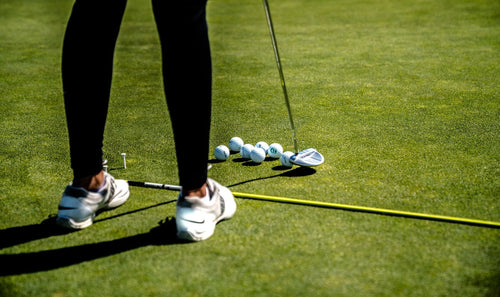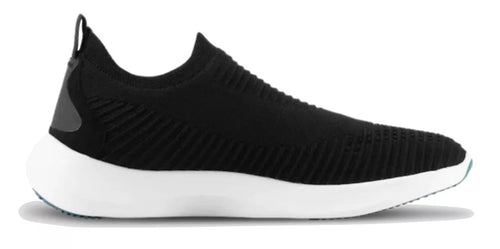Whether you're a seasoned contractor or a DIY enthusiast, working on roofs presents a unique set of challenges and risks. The combination of slippery surfaces, steep angles, and various roofing materials makes the task inherently hazardous.
To mitigate these risks and ensure safety, one of the most crucial investments you can make is in a pair of high-quality roofing shoes. They serve as an insurance policy against gravity's tricks, protecting you from major hazards.
In this article, we'll discuss the key features of safe roofing shoes and explore some of the safest options available on the market. Hopefully, you will find the right footwear for your roofing activities!
The Hazards of Walking on Roofs
When it comes to roofing, there's little room for compromise on safety. Walking on roofs with inadequate or improper footwear can lead to severe accidents and injuries.
Slips, trips, and falls are among the most common accidents when navigating the often unpredictable and treacherous terrain of roofs. The combination of steep slopes, loose debris, and varying roofing materials creates a perfect storm for accidents waiting to happen.
Regular shoes might lack the necessary traction and stability to keep you safe on such surfaces, increasing the chances of a dangerous mishap. This footwear also threatens the roof's integrity, resulting in potential leaks, cracks, or structural issues. This can lead to more extensive and costly repairs down the line.
Thus, the importance of investing in roofing shoes explicitly designed for safety and stability cannot be overstated.
Key Features of Safe Roofing Shoes
Effective roofing shoes share several key features that contribute to providing maximum safety and stability while working on roofs:
- Traction and Grip: The most crucial aspect of roofing shoes is their ability to offer exceptional traction and grip. Specialized rubber soles with advanced traction technology provide a firm grip on slippery surfaces, reducing the risk of slips and falls.
- Slip Resistance: Roofing shoes are designed to be slip-resistant, ensuring that you stay firmly planted on your feet, regardless of the angle or material of the roof.
- Durability: Roofing shoes are built to withstand the rigors of the job. Durable materials and construction ensure that your footwear can handle the demands of working on roofs without deteriorating quickly.
- Ankle Support: High-top roofing shoes provide essential ankle support, reducing the risk of twisted or sprained ankles when navigating uneven surfaces.
- Comfort: Comfort is essential for any footwear, but it's especially crucial when working on a roof. Cushioned insoles and ergonomic design contribute to comfort during long hours of use.
Exploring the Safest Roofing Shoes
In the realm of roofing shoes, several brands and models stand out for their exceptional safety features. Let's take a closer look at these three safest options available on the market:
1. Loom Waterproof Shoes
The Loom Waterproof Shoes is the ultimate fusion of style, comfort, and unbeatable protection for conquering rooftops. Crafted with precision and innovation, these shoes feature advanced waterproof technology that sets them apart.
No more dealing with slippery surfaces or soggy socks – these shoes keep your feet dry and secure, ensuring you're always on solid footing. They have an H2-Go knit layer, a Merino wool interior, and a wool-lined cushion for the user’s comfort.
These waterproof shoes also feature an Excelcast sole designed by podiatrists. It absorbs external shocks to protect your ankles, shins, and knees when walking on rough roof surfaces.
2. WOLVERINE Men's Shiftplus Roofing Shoes
The WOLVERINE Men's Shiftplus Roofing Shoes are crafted for the modern adventurer who thrives on rooftops. These shoes offer a blend of innovation and durability that's hard to match.
The Shiftplus Roofing Shoes are made of 100% leather to ensure you focus on conquering heights rather than battling discomfort. What truly sets these shoes apart is their enhanced grip technology.
The integrated rubber lug outsole delivers a secure and sturdy grip on various surfaces, be it shingles or slippery roofs. These shoes are water-resistant, so you can tackle rain or dew without compromising your traction. The abrasion-resistant toe cap adds an extra layer of protection to ensure the longevity of your footwear.
3. Timberland PRO Men's Wedge Sole Roofing Shoes
The Timberland PRO Men's Wedge Sole Roofing Shoes perfectly blend rugged durability and unmatched comfort. They feature a soft and comfortable sole that cushions your feet throughout the day, ensuring that even the longest roofing tasks remain comfortable.
The full-grain leather upper adds a touch of classic style and offers exceptional durability, making them suitable for the toughest roofing conditions.
These shoes also feature a wedge sole that provides enhanced grip and stability on varying surfaces. Whether you're navigating shingles, slopes, or uneven terrains, these shoes offer a surefooted stride that minimizes the risk of slips.
Designed with the needs of roofers in mind, the Timberland PRO Men's Wedge Sole Roofing Shoes also boast a padded collar for additional ankle support and reduced fatigue. The lace-up construction allows for a secure fit, ensuring your focus remains on the task.
Choosing the Right Roofing Shoes
Selecting the right roofing shoes is a decision that should be guided by your individual needs and the specific roofing tasks you undertake. Here are some guidelines to help you make an informed choice:
- Consider the Roofing Material: Different roofing materials require different levels of traction. For example, if you often work with metal roofing, shoes with advanced metal grip technology might be more suitable.
- Weather Considerations: Consider the weather conditions you'll be working in. Shoes with excellent traction on wet surfaces are crucial if you frequently work in rainy or damp environments.
- Personal Comfort: Comfort is essential for any footwear. Try on the shoes and assess their comfort, as you'll likely wear them for extended periods.
- Ankle Support: If you're working on steep roofs, shoes with high ankle support can prevent injuries and enhance stability.
Conclusion
When walking on roofs, safety should always be the top priority. Proper footwear can distinguish between a successful project and a potentially catastrophic accident. Investing in roofing shoes with features like superior traction, slip resistance, durability, ankle support, and comfort is an investment in your safety and the longevity of the roof you're working on.
With options like GripMaster ProRoof Shoes, SafeStep Roofing Boots, and SureGrip Roofing Footwear available on the market, you have various choices to find the perfect fit for your roofing activities.
By prioritizing your safety and selecting the right shoes, you're taking a proactive step toward a safer and more successful roofing experience.
























